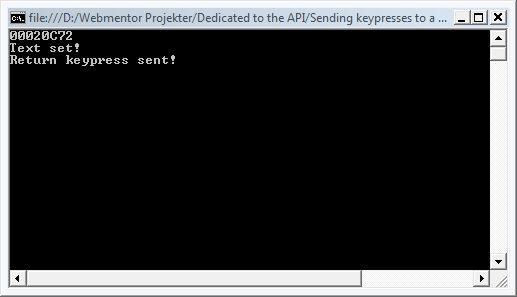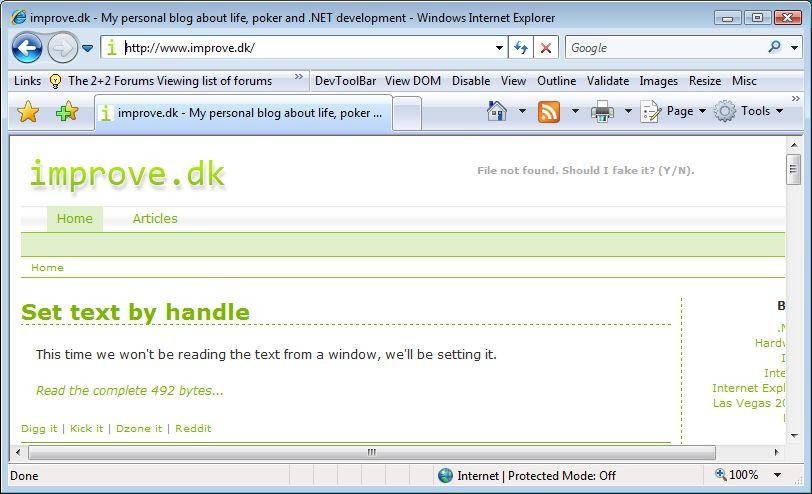Apr
06
2007
Now to complete the toolset required to make a great spyware / browser hijacking application, we’ll make Internet Explorer navigate to the address we set.
Like before, open an Internet Explorer browser and obtain a handle to the address field.
using System;
using System.Runtime.InteropServices;
using System.Globalization;
namespace Sending_keypresses_to_a_window
{
class Program
{
// A Win32 constant
const int WM_SETTEXT = 0x000C;
const int WM_KEYDOWN = 0x0100;
const int VK_RETURN = 0x0D;
// An overload of the SendMessage function, this time taking in a string as the lParam.
[DllImport("User32.dll")]
public static extern Int32 SendMessage(int hWnd, int Msg, int wParam, string lParam);
// PostMessage is very similar to SendMessage. They both send a message to the given
// handle / window, the difference being that SendMessage sends the message and waits
// for the window to "handle" the message and return a return code. PostMessage on the
// other hand simply posts the message and returns instantly, whether the window
// handles the message or not, we don't care.
[DllImport("User32.Dll")]
public static extern Int32 PostMessage(int hWnd, int msg, int wParam, int lParam);
static void Main(string[] args)
{
// First, read the handle from the console, remember this has to be in HEX format!
int handle = int.Parse(Console.ReadLine(), NumberStyles.HexNumber);
// Now we'll send the WM_SETTEXT message to the window, passing the text
// through the lParam parameter.
SendMessage(handle, WM_SETTEXT, 0, "http://www.improve.dk");
Console.WriteLine("Text set!");
// Now send a message telling the Edit box that the Return key has been pressed,
// resulting in Internet Explorer navigating to the page.
PostMessage(handle, WM_KEYDOWN, VK_RETURN, 1);
Console.WriteLine("Return keypress sent!");
// And we're done
Console.Read();
}
}
}
And the result:
Mark S. Rasmussen

